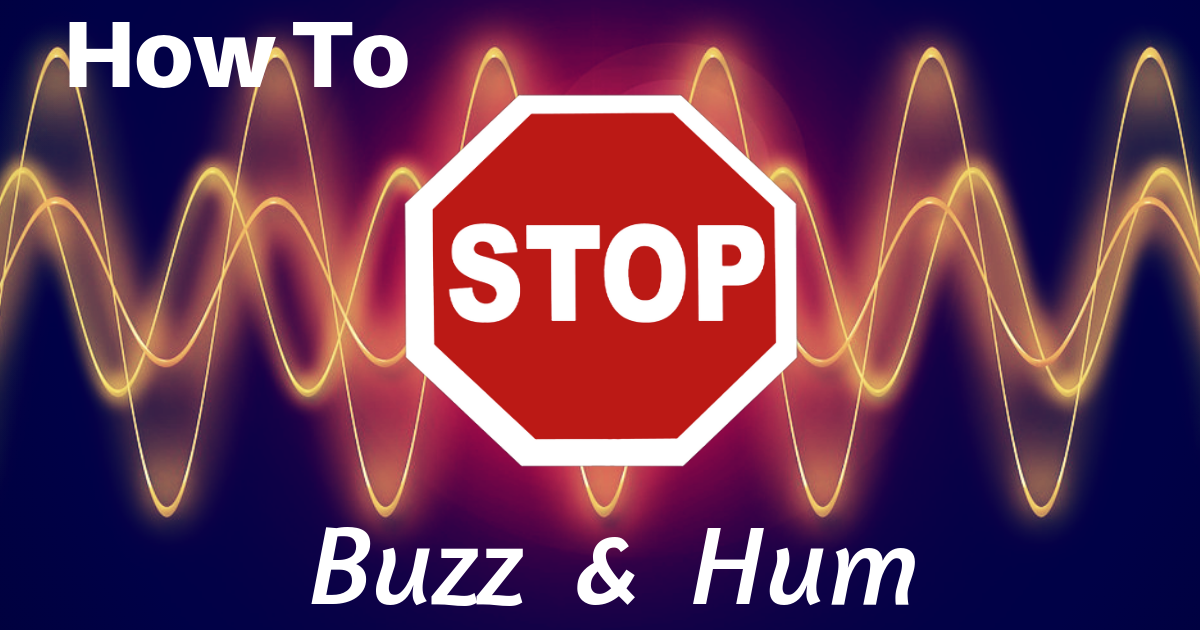Of all the irritating things that happen when you’re rushing to finish a soundcheck, an unwanted buzz coming through the PA system is one of the worst. There are so many possible culprits, and it seems to happen all the time. Since it’s such a common issue, I wanted to walk through the process I use to find and eliminate unwanted noise, in an attempt to make troubleshooting less stressful.
Finding the Source
To begin, determine whether the buzz is coming from the audio system or something onstage by turning off the PA and monitors. If there’s silence, you know the problem is within the system itself. Turn them both back on and mute the PA system: do you still hear the buzz in the monitors? Use this information to narrow your focus area. If the buzz is solely in the monitors, for example, then you know to examine the channels and equipment that are being sent to the monitors only (such as a click track), and can consider the possibility of a bad channel on the monitor board.
Most likely the buzz is caused by a specific input. If it is unclear from the meters which channel is noisy, mute your inputs one by one until the noise stops. (If you are running monitors from front-of-house, make sure your aux sends are post-fader so that the send is muted along with the channel). Check for a bad channel on the board by hard patching the noisy input to another channel. If the buzz persists, check for a bad channel in the signal path by changing inputs on any snakes or sub snakes in use. Listen for any crackling, pops, or other giveaways that there may be a bad microphone or cable.
Most importantly, talk to the musicians! Ask them to stay quiet while you are troubleshooting and ask about their gear – they will be able to tell you any problems they have experienced at past gigs, and maybe even what solutions have worked.
Troubleshooting the System
If the buzz is system-only, the issue is probably power. Check where everyone onstage is pulling power from and whether or not the circuit is used exclusively as audio power. Ideally, backline power will be on a circuit used only for the musicians’ gear, but often at smaller venues lighting and audio share power. Lighting dimmers, movers and fans may be audible if power is shared, so see if the buzz changes as lighting dimmers are moved. It may disappear when the lights are at 100%. In this case, there’s not much you can do besides try to reconfigure the power to be as separated as possible.
Next, check for cable crossing. Look at the paths of unbalanced cables. Do they cross paths or run along any cables carrying AC power? Electrical interference often arises when AC cables are in close proximity to unbalanced cables (for example, pedalboard cables), so it’s best to keep them as separated as possible.
There can also be grounding issues at play. If the hum sounds like it’s around 60 Hz, you probably have what’s called a ground loop. Ground loops occur when the ground connections from two or more separate sources (say, the system power and amplifier power) differ. Ideally, both pieces of equipment reference ground at 0 Volts. But nothing is ideal in real life, so it’s more likely that the ground readings differ slightly: say, 10 millivolts and 0 Volts. When this happens, the difference in electric potential can cause a small current loop that flows between the two connections, resulting in noise.
Here the quickest fix is to lift the ground switch on the channel or amplifier (if there is one) or use an adapter that accomplishes the same thing. But this workaround is not ideal since it removes a safety feature. Having the guitarist move around and angle the pickups differently may be enough to get rid of or at least lessen the hum.
Troubleshooting the Stage
If the noise is coming from one of the pieces of equipment on the stage itself, turn the PA system off and start with the simplest case. Here we’ll use the signal flow of a guitar as an example.
To begin, have the guitarist set their amp to clean. Have them unplug and re-plug their instrument cable at both ends – sometimes the problem is as simple as one end of the cable not being completely connected.
Next, have the guitarist plug directly into the amp, bypassing any pedals. Ask the guitarist to move around onstage, to see if the noise changes with location. If so, environmental noise is probably being picked up by the instrument cable, and there should be a spot on stage where the sound minimizes or even disappears altogether.
Connect pedals one by one and see if the buzz reappears with a specific pedal. Plug the guitarist directly into a DI box, and see if the hum disappears with the ground-lift switch flipped. If so, then you know it’s a grounding problem, with either a ground loop in place or an instrument grounding issue somewhere.
A buzz can also be the sign of tubes in a tube amp going bad. If so, there’s not much you can do beyond tolerating the buzz or switching amps. In the rare case that the guitarist is plugged into two amps and sending each amp one side of a stereo pedal, noise can result from a grounding issue between the two amps themselves.
The General Process
Buzzes, hums, and other unwanted noises only have a few likely sources: instruments, cables, and equipment. When unwanted noise occurs, stay calm and determine the general location of the buzz (system or stage). Then, continue narrowing in until you find the source. You may not always be able to find or fix the exact source, but the tips I have given should help you on your way.
